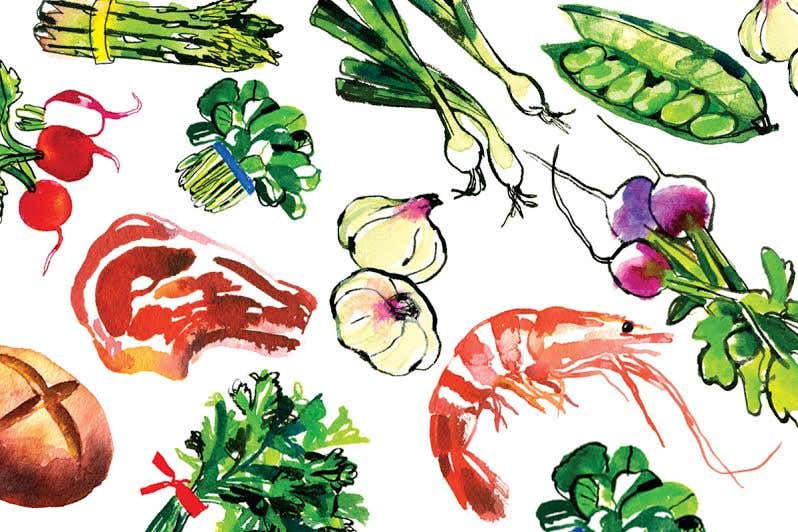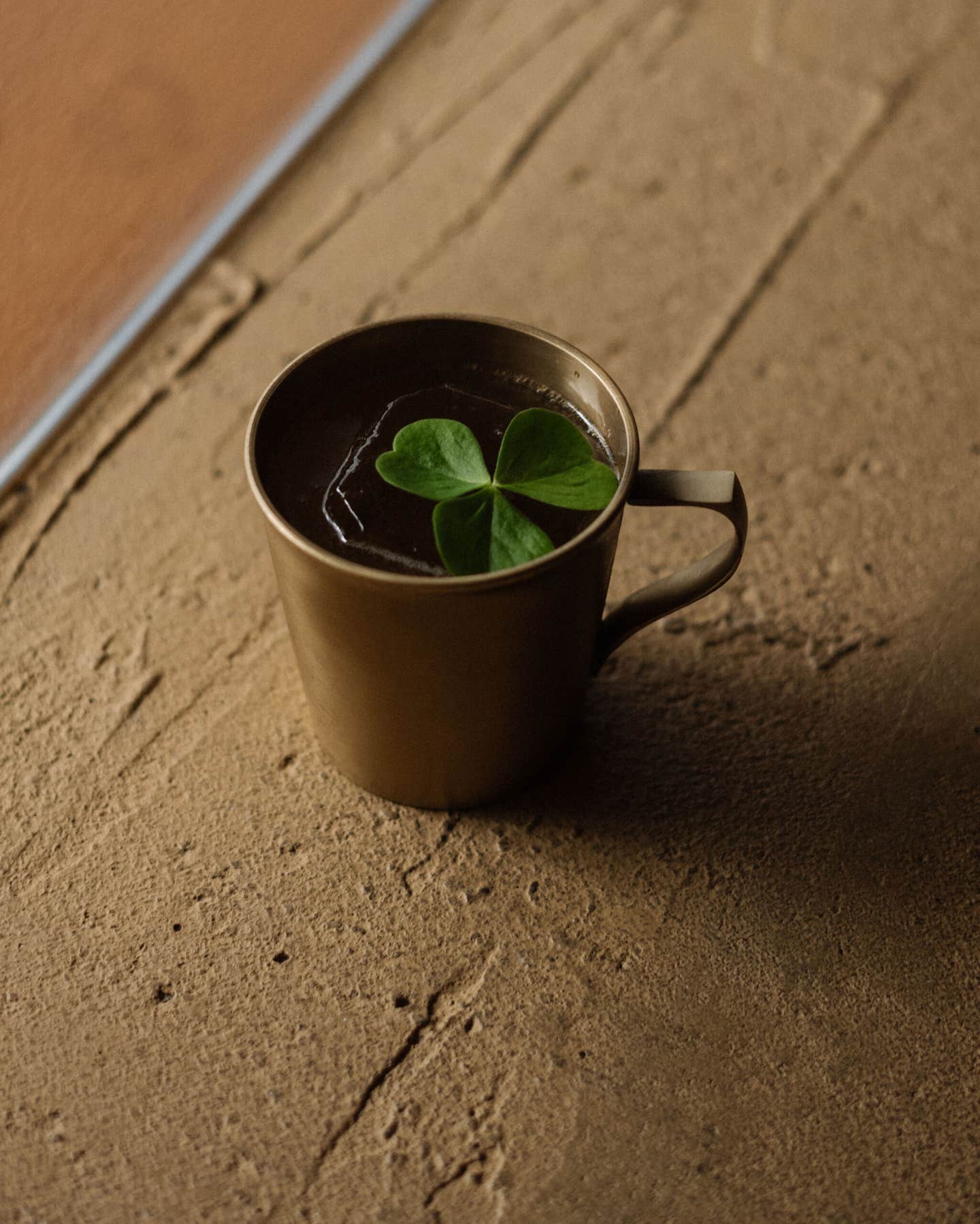
Artisanal Roasting 101
This is Part III of a series on Specialty Coffee, presented by the Specialty Coffee Association of America in conjunction with Saveur.com.
Part I: The Road to Perfection
Part II: The New Frontier of Quality Coffee
Part IV: How Do You Brew?
Part V: Crema of the Crop
Part VI: Nothing Regular About It
Farmers worry. Coffee farmers worry as much as, if not more than, most. They worry about the weather and the crop price, about shoes for the kids, and about the future of the family farm. They worry that the faraway consumer will never taste the goodness in their produce. The coffee farmer works his land to produce a fruit from which stones have been extracted, carefully cleaned, sorted, and sent as far as 8,000 miles to specialty roasters in the United States. It is the roaster's responsibility to reveal the unseen riches within the fruit that is coffee, by developing the flavors and fragrances lying dormant in the deceptively simple-looking beans, and in so doing, keeping faith with the farmer and his dreams for his coffee.
Roasting begins with the creative process of translating the taste of a "cupping sample" on the blender's table into a roast that might eventually serve thousands, yet still reflect the unique characteristics of the original sample. When the roaster succeeds, it is through skill and judgment, fostered by the experience of generations, an understanding of the roasting process and the changes that take place in the beans at various stages of the roast, and an assist from modern technology. Along the way, an industrial task is transformed into an art.
Starches, sugars, proteins, oils, cellulose—in total more than 400 component parts make up the flavors that we recognize as typical of good coffee. The flavor of coffee is very complex, more so than that of red wine, chocolate, or tea.
Some coffees are more sensitive to heat than others. There are coffees that by nature develop the best at a lower-temperature roast, while others require a higher roast point for bringing out their finest attributes. To exploit what's best for the palate in each type of coffee, the operator must raise the roaster heat in a very controlled environment. Raising it too fast will "tip" the beans and create a slightly burned taste, while raising it too slowly will "bake" rather than roast the beans and impart a dull, cereal-like quality to the cup. Many factors are involved in deciding how to "bring along" a roast; even altitude is one of them. In the mountains, the difference in atmospheric pressure and the reduced amount of oxygen in the air during the roasting process can necessitate a change in the roasting parameters. (Altitude will also have an effect later on the brewing of the coffee.)
The roaster determines the general degree of roast required for obtaining the desired results, the speed with which the heat should be applied to the beans, the appropriate depth of color, and other esoteric details, such as whether the blend's components will be roasted together or whether they'll be roasted separately, at different roast points, and blended together after roasting.
It takes about 37,000 British Thermal Units (BTUs) of energy to roast a hundred pounds of coffee. Natural gas is the fuel of choice for most specialty roasters, as it is clean to use (and thus keeps maintenance costs low), is easy to obtain and control, and is always at the ready. Natural gas imparts neither taste nor smell to the beans. Bottled gas is a good substitute, and some roasters prefer oil and even wood fuel.
Every specialty roaster is engaged in a love affair with his roasting machine. It may carry one of a dozen or so venerable nameplates that represent machines hand-built for generations, or it may be a newer design employing modern (though not necessarily better) technology. There are many designs from which to choose: the solid or perforated drum type or the fluid bed type (which roasts by levitating the beans on a cushion of hot air); machines that roast with direct flame, or those that roast with indirect heat. My personal choice is a Lilla built in 1992 to my specifications by Cia. Lilla de Maquinas Ind. e Com., in Guarulhos, a suburb of Sao Paulo, Brazil, which was further modified during and after installation. In my indirect-flame, solid-drum machine, roasting times are between 11 and 14 minutes, depending on the desired degree of roast. The bean temperature rarely exceeds 252˚C (850˚F) in the roast chamber. My roaster is smokeless and cleans and recirculates the gases and smoke produced during roasting to minimize environmental impact and maximize fuel efficiency.
Roasting The Beans
The roaster is on and in a ready state. A quick check of the water pressure, gas pressure, and roaster control panel, with its roasting diagram and tiny glowing red lights and communication window, tell the operator at the Lilla we are ready to make coffee. You can hear the "roar of the lion" (the flame) in the furnace and can see that the flame is blue and perfectly round, as it should be. The sacks of beans to be roasted have been chosen; the green beans are already in the hopper above and behind the roasting cylinder. At an electronic command, they slide into the preheated rotating cylinder chamber.
Standing near the roaster, you can hear the coffee rolling within and flowing forward and back within the chamber, making a rhythmic, swooshing sound both familiar and soothing to the old hand. Though the beans are visible from the porthole-like glass of the roaster door, a long, wood-handled sampler called a "tryer" is kept at hand for drawing a sample of a few grams from the face of the roaster cylinder through an access hole that exists for that purpose alone.
The development of the beans is noted by eye, and the temperature is monitored by an electronic probe in the cylinder. The operator keeps a tray of the sample roast at hand to compare the developing roast in the machine with the finished roasted model. The computer readout, the view through the porthole, and the coffee in the tryer tell where the beans are in the roasting process. The sample in the tray and everything learned in years of roasting help the operator direct the dance of heat and beans as they travel from green to roasted.
In my roaster, dampers are preprogrammed to open automatically during the development of the roast, as the circulation of the hot gaseous material must be controlled carefully. With another model of roaster, the operator may make such adjustments by hand or have semipermanent preset damper positions.
In the first moments of the roasting cycle, the beans appear not to be changing. Then, almost imperceptibly at first, the beans seem for a moment to be greener than they were originally; the color then begins to fade toward parchment, and bit by bit it slowly darkens.
Coffee expands like popcorn in the heat of the roaster. By the end of the roasting process, the beans will have grown to about double their original volume, but the weight of the batch will be about 20 percent less than it was when the batch went into the roaster.
The dynamic changes the beans undergo as their flavoring and their aromatic qualities are altered by the application of heat and the cadence of time are punctuated by two events called "cracks." The first one occurs when the temperature of the bean approaches 150˚C (302˚F) and the beans expand along their natural center cut. The color development begins to speed up now as the pressures released during the first crack have built up again. At 190˚C, hairline cracks may appear in the beans, and they give off the heavy, olive-blue smoke that is characteristic of roasting. This point is often called "second crack" by roasters. Beyond 220˚C, the reactions caused by the fierce heat being produced are very strong, and the moment to "pull" even the darkest roast is reached; if it is not seized, the beans will carbonize and burst into flame. The process is stopped at precisely the desired roast point by an instant drop in the temperature of the beans. An air-inlet door is opened directly above the roaster door, and ambient air is introduced into the roast chamber. At the very same moment, a spray of charcoal-filtered cold water is directed at the hot beans, immediately arresting the roast development. The opening of the roaster door releases the warm beans from the cylinder into the external cooling hopper, where additional ambient air is drawn down through them to finish the cooling process.
The roaster's job is done, and yet the coffee has completed only part of its journey from tree to cup. The roaster's own anxiety now joins that of the coffee farmer—that all the effort that has been put into the coffee will be respected and preserved in the preparation, resulting in a truly worthy cup of coffee.
Keep Reading
Continue to Next Story










